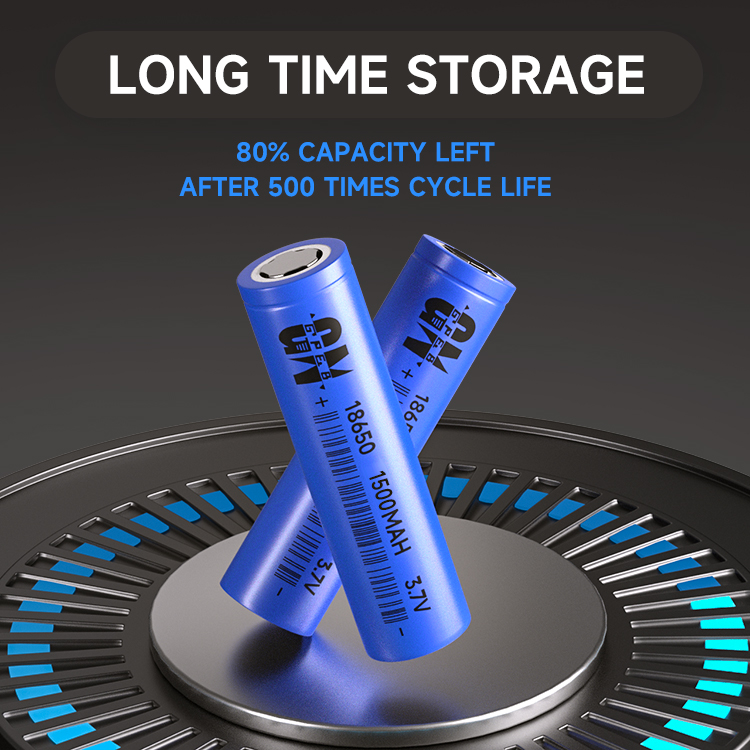
Among the various types of batteries currently in use, lithium batteries
(also known as lithium-ion secondary batteries or lithium-ion batteries) are a
new type of power source that have only been developed in the past decade.
Lithium batteries are different from general chemical power sources. The
charging and discharging process is achieved through the insertion and
deintercalation of lithium ions in the positive and negative electrodes of the
battery. The negative electrode of a lithium battery is a carbon material, such
as graphite; the positive electrode is a lithium-containing transition metal
oxide, such as lithium cobalt oxide (LiC002). Moreover, both the positive and
negative electrode materials of lithium batteries use lithium ion intercalation
compounds with a layered structure in which lithium ions can be freely inserted
and detached. The lithium ions between the layers will undergo an
electrochemical reaction in an appropriate electrolyte. During charging, lithium
ions are extracted from the positive electrode lattice driven by the external
electric field, pass through the electrolyte, and are embedded in the negative
electrode lattice. The process during discharge is exactly the opposite. Lithium
ions return to the positive electrode, and electrons reach the positive
electrode through the external circuit to recombine with the lithium ions.
Compared with commonly used nickel-cadmium and nickel-hydrogen batteries,
lithium batteries have many superior characteristics, mainly in the following
aspects: (1) Lithium batteries do not contain any toxic elements such as mercury
and cadmium, and are truly green and environmentally friendly batteries. (2) The
working environment temperature range is wide, and it can generally work between
-30℃ and 0℃, and has excellent high and low temperature discharge performance.
(3) High specific energy, that is, lithium batteries of the same weight provide
higher energy than other batteries. The specific energy of lithium batteries is
generally 2 to 3 times that of nickel-cadmium batteries and nickel-metal hydride
batteries. Therefore, it is beneficial to reduce the size and weight of portable
electronic devices. (4) The power supply voltage of lithium batteries is high,
generally 3.6V, which is about three times the voltage of nickel-cadmium
batteries and nickel-metal hydride batteries. For electronic equipment with
higher power supply voltage requirements, the number of series cells required in
the battery pack can also be greatly reduced. Therefore, the lithium battery
used in combination can easily obtain higher voltage. (5) No memory effect.
Nickel-cadmium batteries and nickel-metal hydride batteries have memory effects
and must be discharged regularly, otherwise the batteries will fail due to the
memory effect. Lithium batteries have no memory effect and can be charged
directly regardless of the remaining power. This allows the lithium battery
performance to be fully utilized. (6) Long service life. Lithium batteries use
carbon negative electrodes. The carbon negative electrodes do not generate
metallic lithium during the charge and discharge process, thus preventing the
battery from being damaged by a short circuit of internal metallic lithium. At
present, the cycle life of lithium batteries can reach more than 5,000 times,
which is much higher than other types of batteries. (7) The self-discharge rate
is low. Self-discharge rate, also known as charge retention rate, refers to how
much the battery automatically discharges when it is not in use. The
self-discharge rate of lithium batteries is 2% to 5%, that of nickel-cadmium
batteries is between 25% and 30%, and that of nickel-metal hydride batteries is
between 30% and 35%. Therefore, lithium batteries retain charge for the longest
time under the same environment. Based on the above advantages, lithium
batteries are widely used in portable electronic devices. On the other hand,
lithium batteries have high energy density, making it difficult to ensure
battery safety. Specifically, in the overcharge state, the electrolyte will be
decomposed, causing the temperature and pressure inside the battery to rise; in
the overdischarge state, the electrolytic material in the negative electrode,
copper, will melt and cause an internal short circuit, causing the temperature
to rise: When the external circuit is short-circuited or the discharge current
is too large, due to the characteristics of high internal resistance, the
internal power consumption of the battery will increase and the temperature will
also rise, which may cause oxidation or decomposition of the electrolyte,
resulting in shortened lithium battery life. In addition, if the lithium battery
is excessively discharged, the electrolyte in the battery will change, and the
number of recharge cycles will be reduced, thereby affecting the service life of
the lithium battery.
Read recommendations:
LR03
Several misconceptions about lithium battery maintenance!1800mah 18650 battery
How Much is a 48V Lithium Ion Battery?
18650 battery 1800 mah
lithium 18650 li ion battery












































 360° FACTORY VR TOUR
360° FACTORY VR TOUR
 Whatsapp
Whatsapp
 Tel
Tel Email
Email TOP
TOP